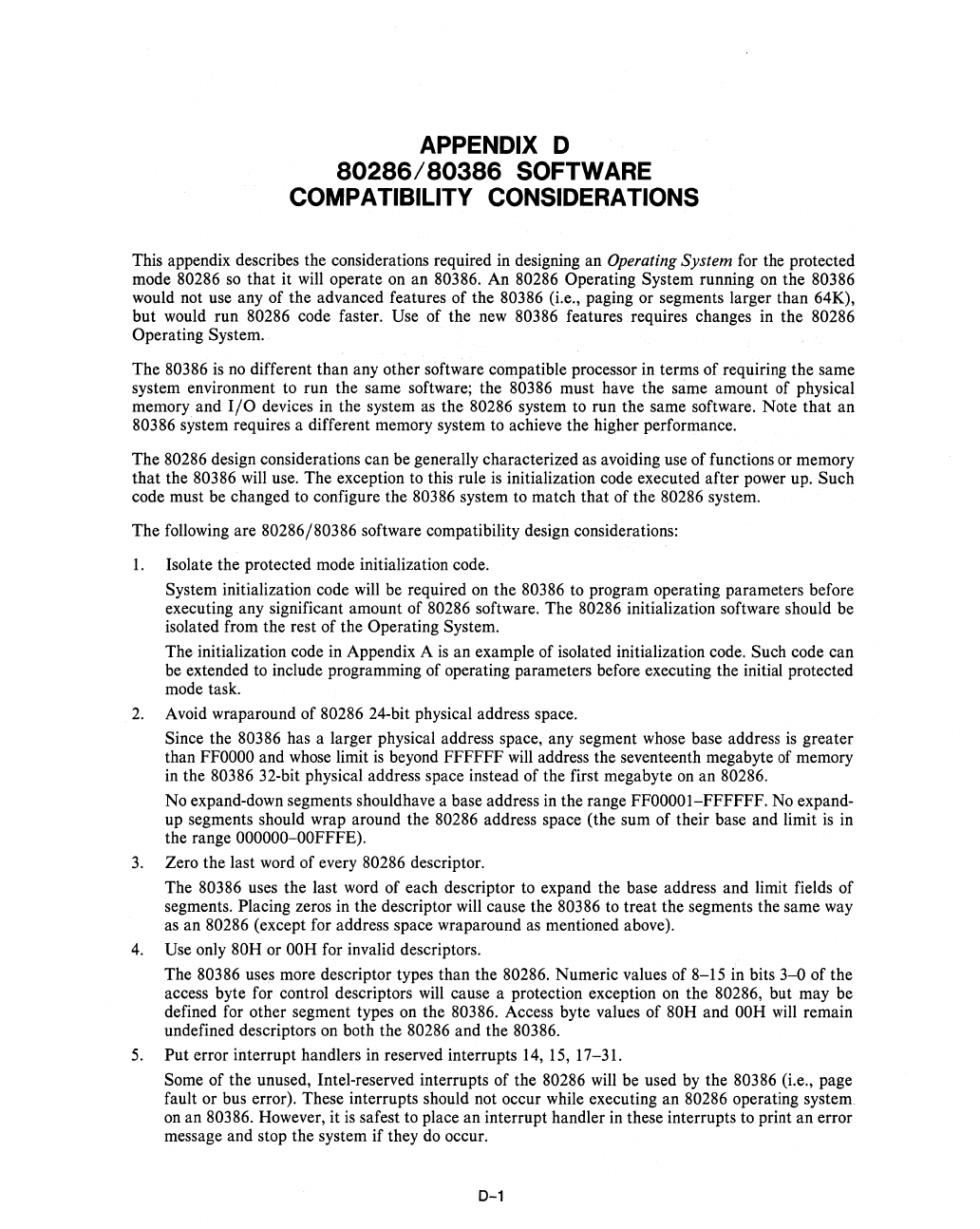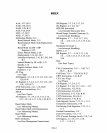
APPENDIX D
80286/80386
SOFTVVARE
COMPATIBILITY CONSIDERATIONS
This appendix describes the considerations required
in
designing an Operating System for the protected
mode 80286
so
that
it
will
operate
on
an 80386. An 80286 Operating System running
on
the 80386
would not use any of the advanced features of the 80386 (Le., paging or segments larger than 64K),
but would run 80286 code faster. Use of the
new
80386 features requires changes
in
the 80286
Operating System.
The 80386
is
no
different than any other software compatible processor in terms of requiring the same
system environment to run the same software; the 80386 must have the same amount of physical
memory and
I/O
devices in the system
as
the 80286 system to
run
the same software. Note that an
80386 system requires a different memory system to achieve the higher performance.
The 80286 design considerations can be generally characterized
as
avoiding use of functions or memory
that
the 80386
will
use. The exception
to
this rule
is
initialization code executed after power up. Such
code must be changed to configure the 80386 system
to
match that of the 80286 system.
The following are 80286/80386 software compatibility design considerations:
1.
Isolate the protected mode initialization code.
System initialization code
will
be required
on
the 80386 to program operating parameters before
executing any significant amount of 80286 software. The 80286 initialization software should be
isolated from the rest of the Operating System.
The initialization code in Appendix A
is
an example of isolated initialization code. Such code can
be extended to include programming of operating parameters before executing the initial protected
mode task.
2.
Avoid wraparound of 80286 24-bit physical address space.
Since the 80386 has a larger physical address space, any segment whose base address
is
greater
than
FFOOOO
and
whose
limit
is
beyond FFFFFF
will
address the seventeenth megabyte
of
memory
in
the 80386 32-bit physical address space instead of the first megabyte
on
an 80286.
No expand-down segments shouldhave a base address
in
the range FF00001-FFFFFF. No expand-
up segments should wrap around the 80286 address space (the sum of their base and limit
is
in
the range
OOOOOO-OOFFFE).
3.
Zero the last word of every 80286 descriptor.
The 80386 uses the last word of each descriptor to expand the base address and limit fields of
segments. Placing zeros in the descriptor
will
cause the 80386 to treat the segments the same way
as
an 80286 (except for address space wraparound
as
mentioned above).
4.
Use only 80H or
OOH
for invalid descriptors.
The 80386 uses more descriptor types than the 80286. Numeric values of 8-15
in
bits
3-0
of the
access byte for control descriptors
will
cause a protection exception
on
the 80286, but may be
defined for other segment types
on
the 80386. Access byte values of 80H and
OOH
will
remain
undefined descriptors
on
both the 80286 and the 80386.
5.
Put error interrupt handlers
in
reserved interrupts
14, 15,
17-31.
Some of the unused, Intel-reserved interrupts of the 80286
will
be used by the 80386 (Le., page
fault or bus error). These interrupts should not occur while executing an 80286 operating system
on
an 80386. However, it
is
safest to place an interrupt handler
in
these interrupts to print an error
message and stop the system if they
do
occur.
0-1


















